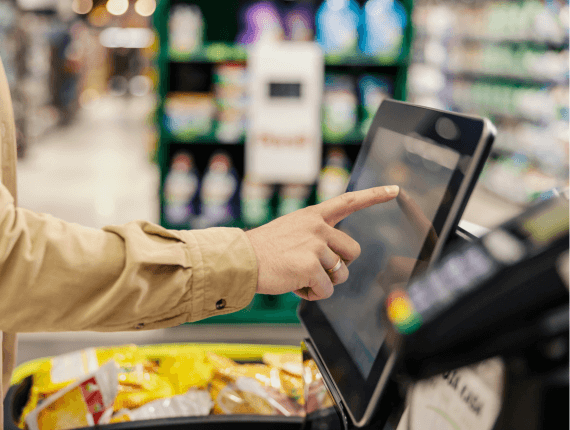Self-checkouts have become an inseparable element of modern stores. In Poland, their popularity is growing—in 2023, as many as 40 percent of transactions in Biedronka were made using them. In the West, however, enthusiasm is clearly decreasing. Customers complain about difficulties in using cash registers, and retailers are beginning to question their profitability. Do Poles have similar observations, or is it the future of convenient shopping for them?
Self-checkouts have been rapidly gaining popularity in retail in recent years. Driven by the growing demand for convenient and quick shopping and the drive to increase operational efficiency, they have been rapidly gaining popularity in recent years. According to the latest Market Research Future report, the value of this segment in 2024 reached USD 4.40 billion. Forecasts indicate that it will increase to $12.07 billion by 2032.1
The E.Leclerc chain introduced one of the first self-checkouts in Poland in 2013. Initially, however, they did not win the hearts of customers, mainly due to technical problems and high failure rates. Today, however, they are a standard in the largest retail chains, such as IKEA, Auchan, Lidl, Rossmann, Decathlon, and Empik.
– The dynamic development of technology makes self-checkouts more and more advanced – they offer contactless payments and integration with mobile applications, and in some stores, they even use artificial intelligence to analyze scanned products and cart contents, which improves the shopping process. Retailers are constantly looking for innovative solutions that will increase customer convenience and optimize the operation of their stores. – says Marcin Zimnicki, Director of Retail Technology Hub and member of the Management Board of Exorigo-Upos.
While self-checkouts are gaining popularity in Poland, their enthusiasm gradually decreases in Western Europe and the USA. Customers increasingly complain about scanning large purchases independently – many still prefer traditional cashier service, especially for more significant transactions. Moreover, these systems often do not generate the expected savings – on the contrary, they require additional staff to supervise and support customers.
Convenience or a source of frustration?
In Europe, customer satisfaction with the shopping experience has fallen to 76 percent, a nearly 10-point regression. One of the essential factors influencing this negative assessment is the insufficient number of self-checkouts – as many as 67% of respondents indicate this.2
However, the mere presence of credit unions is not the solution. The devices are still not free from defects, and their operation can be frustrating. Customers find entering products without a barcode, such as vegetables, fruits, and breads, into the system difficult. An additional problem is the lack of employees when it is necessary to intervene or customers resign and leave their purchases at the checkout. In response, stores are introducing solutions such as remote assistants, where employees can verify a transaction without going to the device.
It is worth noting one more critical aspect of self-checkouts – their impact on store losses. According to ECR data, in stores where more than half of transactions occur without cashiers’ participation, losses are over 30 percent higher than in outlets using only traditional cash registers3.
– Self-checkouts are also a challenge for retailers. They are used for fraud, which prompts some networks to look for new solutions. Solutions based on artificial intelligence are being used more and more often. Not only is the scanned barcode compliant with the product checked (image comparison), but the cart is also monitored to verify that all products have been scanned. – adds Marcin Zimnicki.
Self-checkouts undoubtedly play an increasingly important role in retail, but their development is not uniform worldwide. In Poland, their popularity is growing thanks to investments in new technologies and the support of companies such as Exorigo-Upos, which provide advanced technological solutions for retail. In Western countries, on the other hand, there are doubts about their effectiveness and impact on customer satisfaction. The future of these solutions will depend on further innovation and the ability to adapt them to the real needs of consumers.
1. – https://www.marketresearchfuture.com/reports/self-checkout-in-retail-market-11034
2. – https://finanse.wp.pl/to-wkurza-klientow-na-zakupach-nie-chca-czekac-az-przyjdzie-pomoc-7118688467938080a
3. – Self-checkouts withdrawn from a well-know chain of stores. The devices could be easily “cheated” | Business Zone


